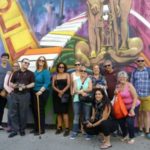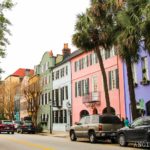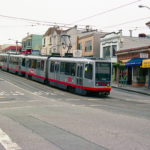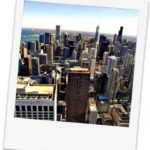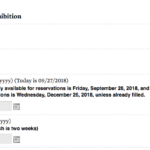The assassination of President Abraham Lincoln is one of the most significant events in American history, marking a turning point in the nation’s journey. A walking tour of the key locations surrounding this tragic event offers a unique perspective on the circumstances and individuals involved, bringing history to life in an unforgettable way.
Join us for an immersive experience with the **Excursión a pie por Lincoln Assassination**, where you’ll explore the streets of Washington, D.C., and gain insights into Lincoln’s last hours. This tour not only recounts the events of that fateful night but also delves into the impact of Lincoln’s legacy on the nation and the world.
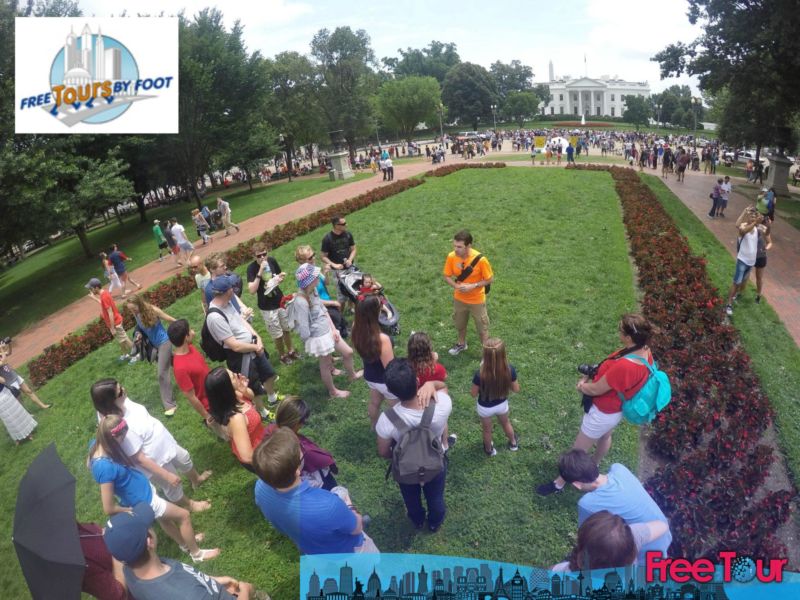
Exploring the Historic Sites of the Lincoln Assassination Walk
Embarking on the journey of Exploring the Historic Sites of the Lincoln Assassination Walk allows visitors to step back in time and witness the pivotal moments surrounding Lincoln’s assassination. The tour highlights key locations such as Ford’s Theatre, where Lincoln was shot, and the Petersen House, where he succumbed to his injuries. Each site offers a captivating glimpse into the past, enriching our understanding of this monumental event.
As you navigate the streets of Washington, D.C., you will encounter several notable sites that played crucial roles in the aftermath of the assassination. Key locations include:
- Ford’s Theatre: The scene of the tragic event.
- Petersen House: The location where Lincoln was pronounced dead.
- The Old Capitol Prison: Where conspirators were held.
- Graham’s boarding house: The last known residence of John Wilkes Booth.
Each stop on the tour is accompanied by stories that illuminate the lives of those involved, from the president himself to his loyal aides and the tragic figure of Booth. This exploration not only emphasizes the historical significance of these sites but also invites reflection on the impact of Lincoln’s assassination on American society and politics.
The Lincoln Assassination Walk is an opportunity to connect with history on a personal level. By experiencing the actual locations, participants can feel the weight of the past and appreciate the stories that shaped a nation. The journey invites exploration, reflection, and a deeper appreciation for the enduring legacy of Abraham Lincoln.
Top 5 Must-Visit Locations on the Lincoln Assassination Trail
When exploring the Lincoln Assassination Trail, one cannot miss the iconic Ford’s Theatre. This historic site is where President Lincoln was fatally shot by John Wilkes Booth on April 14, 1865. Today, the theatre serves as a museum, offering insights into Lincoln’s life and the performance he was attending at the time of the assassination. It’s a poignant reminder of the tragedy that unfolded within its walls.
Another essential stop is the Petersen House, located just across the street from Ford’s Theatre. This is where Lincoln was carried after he was shot and ultimately succumbed to his injuries. The house has been preserved to reflect the atmosphere of that night, allowing visitors to gain a deeper understanding of Lincoln’s final moments and the medical practices of the time.
The Old Capitol Prison is also a significant location on the trail. This site housed several conspirators involved in the assassination plot. Walking through its historic halls provides a glimpse into the justice that followed Lincoln’s assassination and the nation’s response to the act of violence. It’s a sobering reminder of the tensions that existed in a divided America.
Lastly, the Graham’s Boarding House offers further context to John Wilkes Booth’s escape after the assassination. This was Booth’s last known residence, and exploring this location helps to piece together the events of that night and the ensuing manhunt. Each site along the Lincoln Assassination Trail contributes to a richer understanding of this critical moment in American history.
Understanding the Impact of Lincoln’s Assassination on American History
The assassination of Abraham Lincoln not only altered the course of American history but also left a profound legacy that resonated through generations. This tragic event catalyzed significant shifts in political, social, and cultural landscapes across the United States. Understanding the impact of Lincoln’s assassination reveals how it influenced the nation’s direction during the Reconstruction Era and beyond.
In the wake of Lincoln’s death, the country faced a tumultuous period characterized by:
- Political Repercussions: The rise of radical Reconstruction policies.
- Social Change: A renewed focus on civil rights and the integration of previously enslaved individuals into society.
- Cultural Reflection: A surge in literature and art inspired by themes of loss and redemption.
Moreover, Lincoln’s assassination prompted a collective mourning that unified a fractured nation, fostering a sense of shared identity. The manhunt for John Wilkes Booth and the subsequent trials of his co-conspirators underscored the deep divisions within American society and highlighted the ongoing struggle for justice in a post-war context.
Ultimately, the legacy of Lincoln’s assassination shapes contemporary discussions about democracy, governance, and civil liberties. As we reflect on this pivotal moment, it becomes clear that understanding its implications is essential for comprehending the complexities of American history and the ongoing journey toward equality and justice.
Guided Walking Tours: Retracing the Steps of Lincoln’s Assassination
Guided walking tours focused on the Lincoln Assassination provide a unique opportunity to experience history in a tangible way. As you stroll through Washington, D.C., knowledgeable guides narrate the dramatic events leading to Lincoln’s tragic fate, offering insights into the political climate of the era. This immersive exploration not only recounts historical facts but also captures the emotional weight of that fateful night, making it an unforgettable journey for history enthusiasts.
Visitors can expect to visit significant sites that played critical roles in the events surrounding Lincoln’s assassination. Each location is steeped in history and offers a chance to reflect on the implications of that night. Key highlights include:
- Ford’s Theatre: The site of Lincoln’s assassination.
- Petersen House: Where Lincoln was pronounced dead, preserved in its original state.
- The Old Capitol Prison: A glimpse into the justice served following Lincoln’s death.
- Graham’s Boarding House: The escape route of John Wilkes Booth.
As the tour progresses, participants are invited to engage with the stories of individuals who were pivotal to the assassination narrative. From President Lincoln’s last moments to the actions of Booth, the tour reveals the complex web of motivations and consequences that altered the course of American history. This interaction fosters a deeper understanding of the historical figures involved and the societal impacts that followed.
Ultimately, guided walking tours of the Lincoln Assassination offer an enriching experience that goes beyond mere sightseeing. By retracing the steps of that harrowing night, participants not only gain a fresh perspective on the events but also come to appreciate the enduring significance of Lincoln’s legacy and the lessons learned from this pivotal chapter in American history.
The Role of Ford’s Theatre in the Lincoln Assassination Story
Ford’s Theatre holds a profound significance in the Lincoln assassination narrative as the actual site where President Abraham Lincoln was shot on the night of April 14, 1865. This historic theatre was hosting a performance of «Our American Cousin» when John Wilkes Booth, a Confederate sympathizer, carried out his deadly plan. Today, Ford’s Theatre serves not only as a place of remembrance but also as a museum, offering insights into Lincoln’s life and the cultural context of the era. Its role in this tragic event underscores the intersection of entertainment and history, marking it as a pivotal landmark.
Witnesses who were present at Ford’s Theatre that evening experienced a scene of confusion and chaos as the shot rang out. After the assassination, the theatre quickly became a crime scene, leading to an immediate investigation of Booth’s escape. The response from the audience transformed the venue from one of entertainment into a stark reminder of national tragedy. This profound shift highlights the theatre’s dual role—both as a site of joyous performances and a backdrop to one of the darkest moments in American history.
The legacy of Ford’s Theatre extends beyond the assassination itself; it has become a symbol of resilience and remembrance. Each year, thousands visit this site to pay homage to Lincoln and to reflect on the enduring impact of his leadership. The theatre hosts performances that celebrate Lincoln’s values and contributions, providing a means to connect with the past while fostering a dialogue about freedom, equality, and justice. This continuous engagement ensures that the significance of the events that transpired within its walls remains alive in the collective memory of the nation.
Moreover, Ford’s Theatre is instrumental in the ongoing education about the Civil War and its aftermath. The theatre offers various programs and exhibitions that delve into the social and political climate of the time, allowing visitors to gain a nuanced understanding of the factors that led to Lincoln’s assassination. By presenting a multifaceted view of that historical moment, Ford’s Theatre not only commemorates Lincoln’s legacy but also encourages reflection on the lessons learned and the ongoing struggles for justice in contemporary society.
A Comprehensive Guide to the Lincoln Assassination Walking Tour
The Lincoln Assassination Walking Tour provides an extraordinary opportunity to immerse yourself in one of the most pivotal events in American history. Each step through the streets of Washington, D.C., reveals the deeper narratives of that fateful night, from Lincoln’s last moments to the chaotic aftermath of the assassination. Visitors are invited to explore not only the key sites but also the stories of the individuals whose lives were forever changed by this tragedy.
This comprehensive guide ensures that participants can make the most of their journey by highlighting essential aspects of the tour, including:
- Expert Guides: Knowledgeable narrators who provide context and insight.
- Interactive Experiences: Engaging activities that deepen understanding.
- Historical Significance: A focus on the long-lasting impact of Lincoln’s assassination.
As you traverse significant locations such as Ford’s Theatre and the Petersen House, you will gain a profound appreciation for the broader implications of Lincoln’s assassination. Each site serves as a reminder of the political, social, and cultural upheaval that followed, encouraging reflection on how this moment reshaped the American landscape.
In addition to the walking tour, visitors can enhance their experience by taking part in related historical programs and events. These activities allow for a deeper exploration of the themes surrounding Lincoln’s legacy, civic responsibility, and the ongoing journey toward equality. By participating in the Lincoln Assassination Walking Tour, you not only witness history but also actively engage with its enduring lessons.


